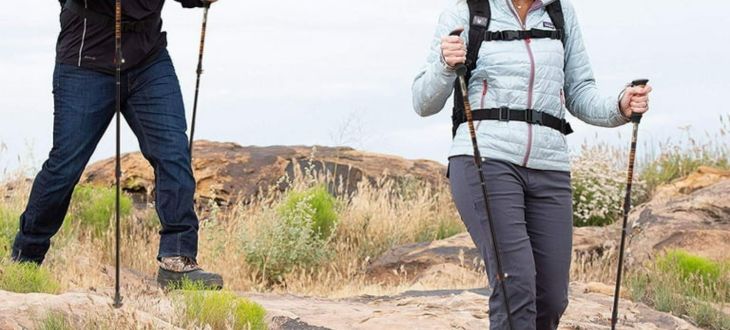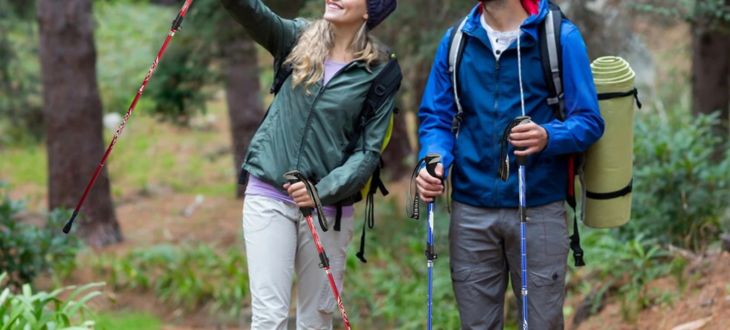When it comes to hiking, the right gear can make all the difference. Among the most overlooked yet essential tools is the wood hiking stick. More than just a piece of wood, a well-crafted hiking stick offers unmatched stability and support on all types of trails — from gentle forest paths to rugged mountain climbs. Whether you’re a seasoned trekker or a weekend walker, using a wood hiking stick can transform your hiking experience in surprising ways.
Why Choose a Wood Hiking Stick?

In a market flooded with modern trekking poles made of aluminum and carbon fiber, one might wonder: why choose a wood hiking stick? The answer lies in its natural strength, traditional charm, and versatility. Wood has been used for centuries by hikers, shepherds, and travelers across the globe. Unlike synthetic materials, a wood hiking stick provides a warm, comfortable grip and carries a unique character shaped by the grain and age of the tree it came from.
Many hikers find wood sticks more grounded, quite literally. Their slight weight and solid structure give a reassuring sense of contact with the earth. Plus, they’re often more eco-friendly and biodegradable than their metal or plastic counterparts.
Stability on Uneven Terrain
One of the biggest advantages of using a wood hiking stick is the added stability it provides. Uneven trails, rocky slopes, muddy paths, and steep inclines can challenge your balance — especially when carrying a backpack. A sturdy wood hiking stick acts as a third point of contact with the ground, helping you navigate obstacles safely.
It reduces the chances of slips, trips, and falls, particularly when crossing streams or descending a steep trail. For older hikers or those with joint concerns, this added balance is invaluable.
Support That Eases Joint Stress

Hiking can be hard on the knees, especially during descents. The shock of each step downhill can put tremendous pressure on joints, hips, and lower back. A wood hiking stick helps distribute your weight more evenly, acting as a shock absorber and giving your joints a break.
By using the stick to take some of the load off your legs, you reduce fatigue and improve your overall posture. Over long distances, this support can help you hike further and more comfortably, with less pain the next day.
An Extension of Your Presence
A wood hiking stick is more than a functional tool; it becomes part of your hiking identity. Each stick carries its own story — shaped by the tree it came from, the hands that carved it, and the paths it’s walked. Whether it’s a simple staff or a beautifully carved piece, your hiking stick reflects your personality and journey.
Some hikers personalize their sticks with carvings, hiking badges, or leather grips. Over time, a wood stick may develop a worn patina, recording every trail and adventure it’s seen. This makes it not only a tool but also a treasured keepsake.
Choosing the Right Wood Hiking Stick
Not all wood hiking sticks are made equal. When choosing one, consider the following:
- Type of Wood: Hardwoods like hickory, oak, ash, and maple are durable and resistant to cracking. Each has its own feel and weight.
- Length: A stick that reaches about chest height is typically ideal, though it depends on personal preference and terrain.
- Weight: You want it sturdy but not too heavy. A well-seasoned stick should feel solid yet manageable on long hikes.
- Grip and Finish: Look for a smooth grip area, often wrapped with leather or rope for comfort. Some finishes protect against the elements without making the stick slippery.
You can buy a finished stick from a reputable maker or make your own from a properly dried branch — which can be a fun and meaningful project.
Multipurpose Tool for the Trail
Beyond walking support, a wood hiking stick has many secondary uses:
- Clearing paths of overgrowth, spiderwebs, or loose rocks.
- Testing depth in water or soft ground.
- Defense against aggressive animals.
- As a tent pole, fishing rod, or emergency splint in a pinch.
Its versatility makes it an essential companion, especially for backpackers who value multi-use gear.
Caring for Your Wood Hiking Stick

To ensure your wood hiking stick lasts for years, a little maintenance goes a long way. Keep it dry when not in use and store it in a cool place to prevent warping. Applying a coat of linseed oil or beeswax can protect it from moisture and cracking. If you hike in wet conditions, wipe it down after your trek and let it dry naturally.
Conclusion
A wood hiking stick is a timeless companion for those who love the outdoors. It offers much more than balance and support — it connects you to nature in a deeply traditional and personal way. Whether you’re navigating rocky ascents or wandering quiet forest trails, your wood hiking stick will be there with every step, offering strength, stability, and a sense of belonging to the journey.
So next time you lace up your boots, don’t forget your most reliable trail partner: the humble, sturdy, and soulful wood hiking stick.




